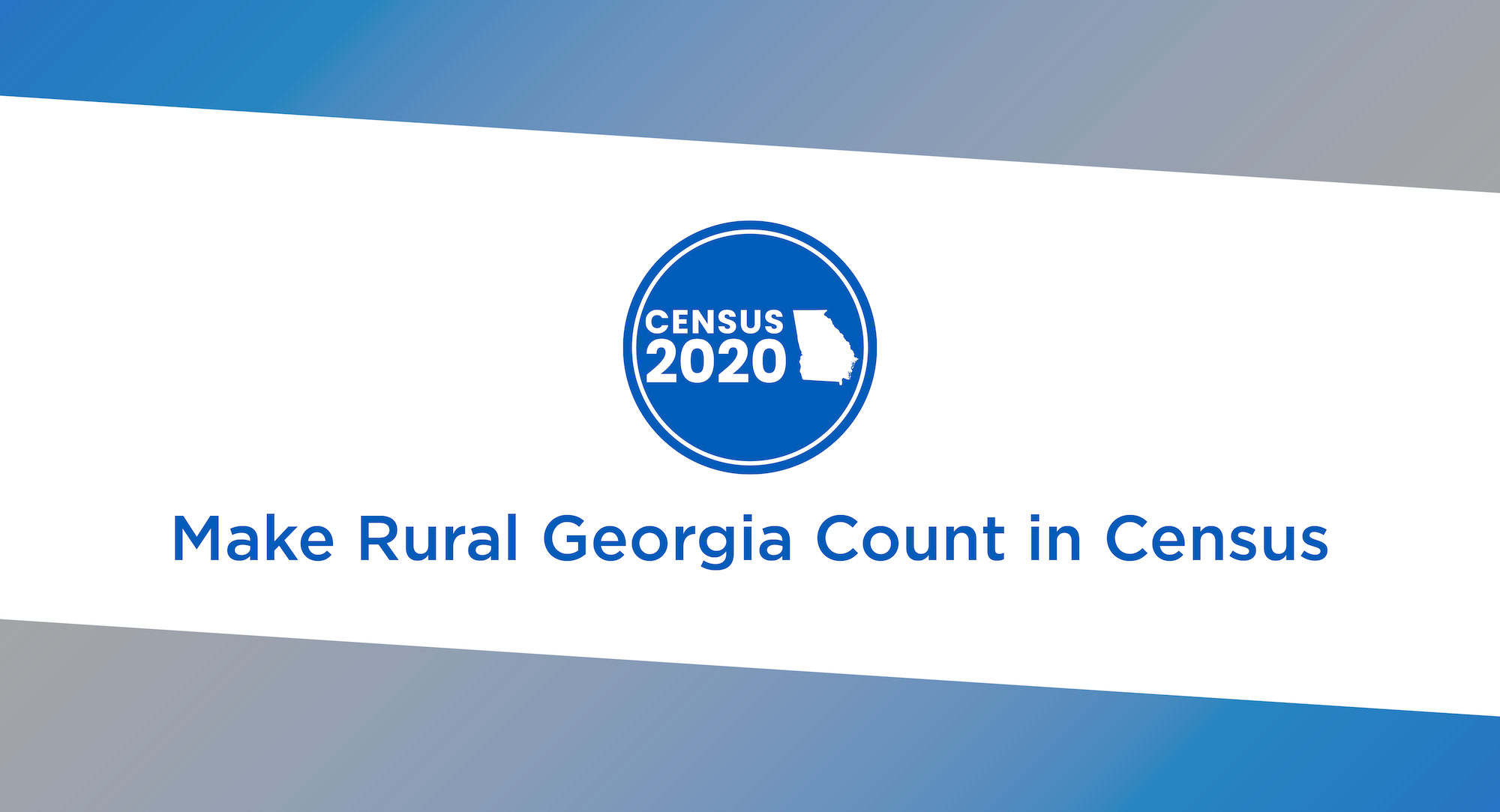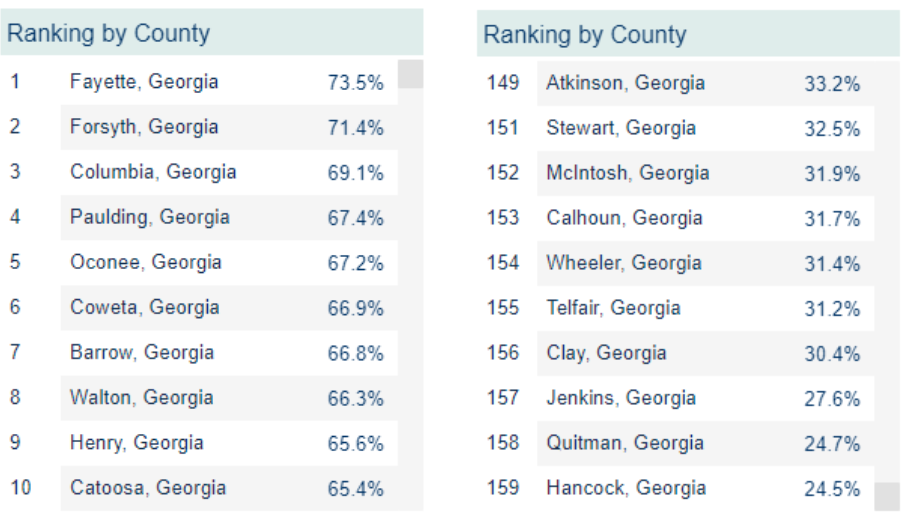Make Rural Georgia Count in Census

The 2020 Census is underway, and it is time to act. A full and accurate count of all state residents is vital for Georgia communities, but it is rural Georgians who could feel a major difference between a count that is only partly accurate – and one that includes every single member of the community.
The results of the census are about funding and representation, and there has rarely been a time when it was more important to get it exactly right.
The Importance of the Census
The census is taken only once every 10 years – and the 10 minutes it takes to complete could mean a difference of thousands of dollars in federal resources for Georgia communities.
For example, census numbers provide key data that determines how many members represent a state in the U.S. House of Representatives. A state that gains population might gain an additional member of Congress; a state that loses population could lose a member of Congress.
Georgia’s health clinics, roads, fire and emergency departments, schools and rural transit are examples of programs that receive federal funds, which are then administered on the local level in Georgia.
The number of people who respond in the census will shape our communities for the next decade. Getting an accurate count of older Georgians, babies and every age in between makes a difference in where tax dollars are put to work.
Georgia's Census Response Rate
To-date, the response rate for the 2020 Census in Georgia is 57.6%. This is not far from the nationwide average of 61.6%, but rural Georgia counties have a much lower response rate than their metro counterparts.
The U.S. Department of Agriculture, the Georgia Department of Community Affairs and other government agencies define “rural” as a county having 50,000 or less in population. The map below shows the difference in response rates between metro and rural counties across the state.
Nine of the top 10 counties in Georgia with the highest participation are metro counties, and only one, Oconee County, is rural.
All 10 of the counties with the lowest response so far are rural counties. The difference of more than 49% between the highest and lowest responding counties shows that rural Georgians have important work ahead to increase their census response rate.


Completing the Census
The Governor’s Complete Count Committee was formed in 2017 to plan and spread the word about this effort, and Governor Kemp expanded this committee last fall as the 2020 Census approached.
Committee members have been working diligently to help ensure all Georgians are counted, including the creation of Local Complete Count Committees. These committees are continuing to lead community-wide efforts to inform every single Georgian of the importance of the 2020 Census.
Participation in the census is required by law. Not only does it pay to act, but the cost and consequences of inaction will be high for our communities – and they’ll last at least a decade.
It is imperative that every Georgian is counted in the census. Georgians can easily participate in this once-in-a-decade effort by spending just 10 minutes online at: census.gov.
Responses for the 2020 Census are due by August 10.
*Data Source: 2020census.gov/en/response-rates
